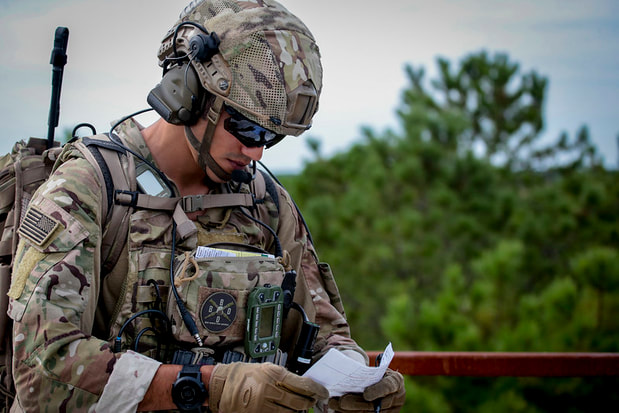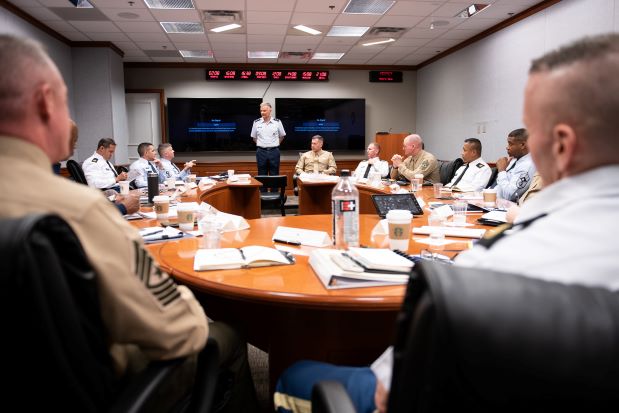|
Two business leaders share how their time in the U.S. Army helps them win in the marketplace In 2020, we've seen market disruption unlike anything in recent history. This market disruption has led to increased volatility, with businesses of all sizes scrambling to navigate changing consumer attitudes, spending shifts, unknown government leadership and regulation futures, and access to funds. As (some) coastal empire business pros drive to the office (fighting market disruption, anxiety, and information overload), they often pass humvees, uniformed soldiers, and even tanks. Nestled within our market is a force which has been thriving in chaos and unforeseen obstacles for over 245 years. Perhaps they could lend us some insight in this turbulent time... More specifically, can small-and-mid-size businesses adapt U.S. Army tactics to gain clarity on a target market and succeed in volatile environments? From scouting and reconnaissance to small business sales leadership To uncover any data principles which can translate from the battle field to the marketplace, I decided to contact people who have lived in both worlds. I interviewed two gentlemen who fit this description perfectly: James Wooden and Adam Ragsdale. James Wooden is the Global Sales Director at Identity & Access Solutions, a corporate digital security solutions firm. He served in the U.S. Army for a decade as a reconnaissance specialist and later as a sniper attachment to light infantry. J. Adam Ragsdale, PLA, ASLA, is the Director of Business Development at EMC Engineering, a Savannah-based consulting engineering firm. He was commissioned out of UGA and served from 1995-2003 as an Army Cavalry officer. Could you summarize your military role(s) for us civilians and then the same for your current role? James: I spent most of my time in a recon element on the light infantry side. We'd go scout our route, go behind enemy lines, and gather intel to be used in decision-making. There was a lot of gathering intel for the battle (and staying hidden). It was a scout-type role - cavalry scout to be more specific. I later went to sniper school. The job changed a bit, but still involved gathering intel. Snipers get their set-up, then the hardest part is being hidden and staying hidden. (As a sniper) you get a good vantage point. You can tell a lot about the enemy and what they have. As a sniper, 90% of the job is staying hidden and gathering intel - only 10% is taking out targets. (In business) I've been doing software sales for about fourteen years. For over six years, I've been at Identity & Access Solutions, where I'm the Global Director of Sales and part-owner. We have solution experts which help our clients implement identity access platforms. There is a lot of technical placement and gathering of intel involved. Adam: I entered the U.S. Army straight out of college, being selected for cavalry and later stationed in Europe. In and out of the Balkans in the late 90s, I started as a tank platoon leader - responsible over M1 Abrams tanks and soldiers. Then I became a scout platoon leader over Bradley Fighting Vehicles (BFV) and 30 soldiers. As cavalry troop executive officer, I was responsible for over 100 soldiers and my job involved a lot of planning and logistics (as well as maintenance). We were responsible for conducting operations and communications back to HQ during combat. My final active duty role was state-side in more of a training command role, where we developed training platforms for combat vehicles. In my current role with EMC, I am responsible for our business intelligence regarding opportunity identification. I also manage the sales data and pipeline for our company. A big part of my job is managing the process of competing in open bids and RFPs for government contracts. The role of data in the U.S. Army We hear the term "data" in the business world, but in depictions of military units, we hear "intel". What is intel from a military context, and what is its importance? James: Taking down a (sales) deal is similar to taking down a military objective. The basis of all that is intelligence. The sales world has taken many military-type terms and absorbed them, e.g., battle cards. If you are going to take a hill or rescue someone from a compound, you have to have all the information to complete the mission. For sales, you have to have ZoomInfo, CRM, partner communications, etc. The parallels between the two fields really came home for me when I started working corporate sales. When I was learning sales strategies, it reminded me of my military roles. Adam: In a military context, intel is knowing your enemy - their strengths and weaknesses, what they can do, and their macro picture (economic, general climate, geology). Intel is also comparing the enemy's capabilities to your own. When you get your operations orders, it's important to have intel like A. your opponents strengths, B. your ability to outmaneuver them, and C. how well-supplied they are. In short, intel is critical. Everything the U.S. Army does both short-term and long-term is intelligence-driven. For example, we know three to five years out when we are deploying (in normal environments). About what kind of data are we talking? James: It includes size, activity, locations, and timing. Once you get all that information, you go into avenues and approach of terrain. In my time, we would watch and see enemy movements. What kind of equipment did they have? What are their activities? This intel has life and death consequences. Bad intel is a major factor in mission ineffectiveness. Adam: Internal strengths and weaknesses, enemy strengths and weaknesses, and the same for allies. A lot of war comes down to "beans and bullets", so gathering intel on the supplies and arms of your enemy, your allies, and your own organization is crucial. Is intel only used by specific personnel or in a more decentralized fashion? James: The plans come from above, but every last man knows the objective. Army reconnaissance elements go forward, gather intel, put it on a board, make details for combat, and report it to command. This data is leveraged by top command to create a battle plan. Adam: The soldier at the lowest level needs to know what's going on for him or her to succeed. Leaders need to help and ensure everyone knows what the plan is. At the same time, there are levels of intelligence in the Army. When I was in, it was J2 for the Pentagon, G2 for division, and the squad or battalion were S2 level. Today, the Army is different - the technology has changed so much, as well as their organization. Are there key performance indicators (or similar) in the Army? How important are they? James: There are, and they factor into promotions (especially in combat arms). Examples are physical training tests, Seargents Time Training (STT - where squad leaders get to work with their unit on tasks necessary to accomplish its mission), and range qualification. Your ability to learn, and both individual and team performance are measured and managed in the U.S. Army. Adam: In the Army, we call them KSAs: knowledge, skills, and abilities. Everything in the Army is rehearsed. Everything is debriefed. In the business world, we try to get a debrief as to why certain campaigns or target opportunities succeeded or failed in order to learn lessons. It's similar in the military. How has your time in the military aided you in utilizing data in the business world? James: Corporations have a military-style structure. The one thing you really learn is the devil is in the details. You must be persistent and disciplined in gathering data. Adam: The Army made me who I am. I wouldn't change the way I was commissioned. It's a family tradition. That level of responsibility and drive was something that formed me into what I would do in the business world. Winning the battles for your organization Small businesses are wading through a chaotic economy right now. The Army works in much more chaotic environments. What is your advice to small business leaders regarding decision-making, measurement, and buy-in? James: Many companies have taken advantage of the COVID crisis. Lots of tech companies have grown, stock prices have increased. Looking at what your target customer/demographic is looking at is key. Find out what their needs are and how you can help them solve a problem. Go find the problems. The more information you gather the better because people are going to be more hesitant to spend. You must be specific in how you can help your target customer/demographic. Conduct a lot of research on the target company then leverage your network to get human intel to get a foot through the door. Cold calling is limited as a tactic (because your target customers have looked at a lot of the variables) so it helps to be introduced. CIA operatives also use these principles. Adam: Over-communicate, have good leadership, and don't have secrets. Not everyone needs to know everything, but you must be deliberate in communicating what's going on. Talk openly about the condition of the business. This approach has helped us when we went remote. Productivity went up and we've seen a lot of opportunities. Over-communication has helped us do well with the pivots. With planning, pipeline and backlog are our biggest planning factors. You have to manage your KPIs and communicate with your clients about their intentions. Furthermore, debrief your engagements with your clients and give them confidence in your ability. Final debrief
Comments are closed.
|
AuthorWrite something about yourself. No need to be fancy, just an overview. Archives
March 2023
Categories
All
|





 RSS Feed
RSS Feed
